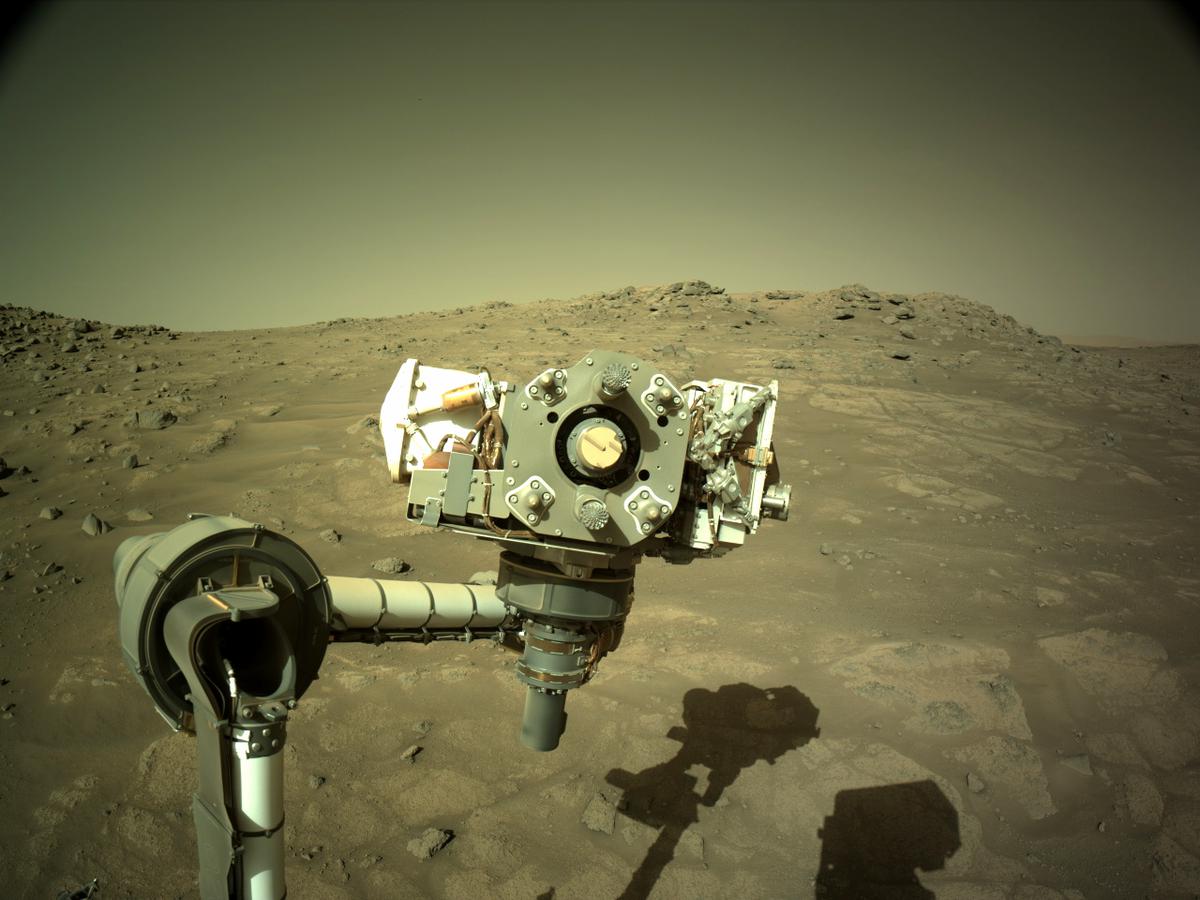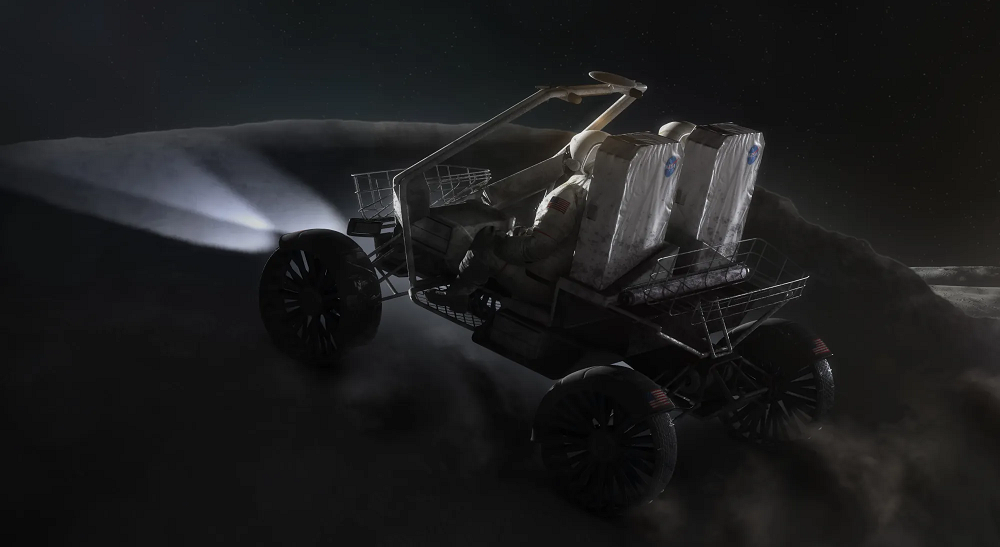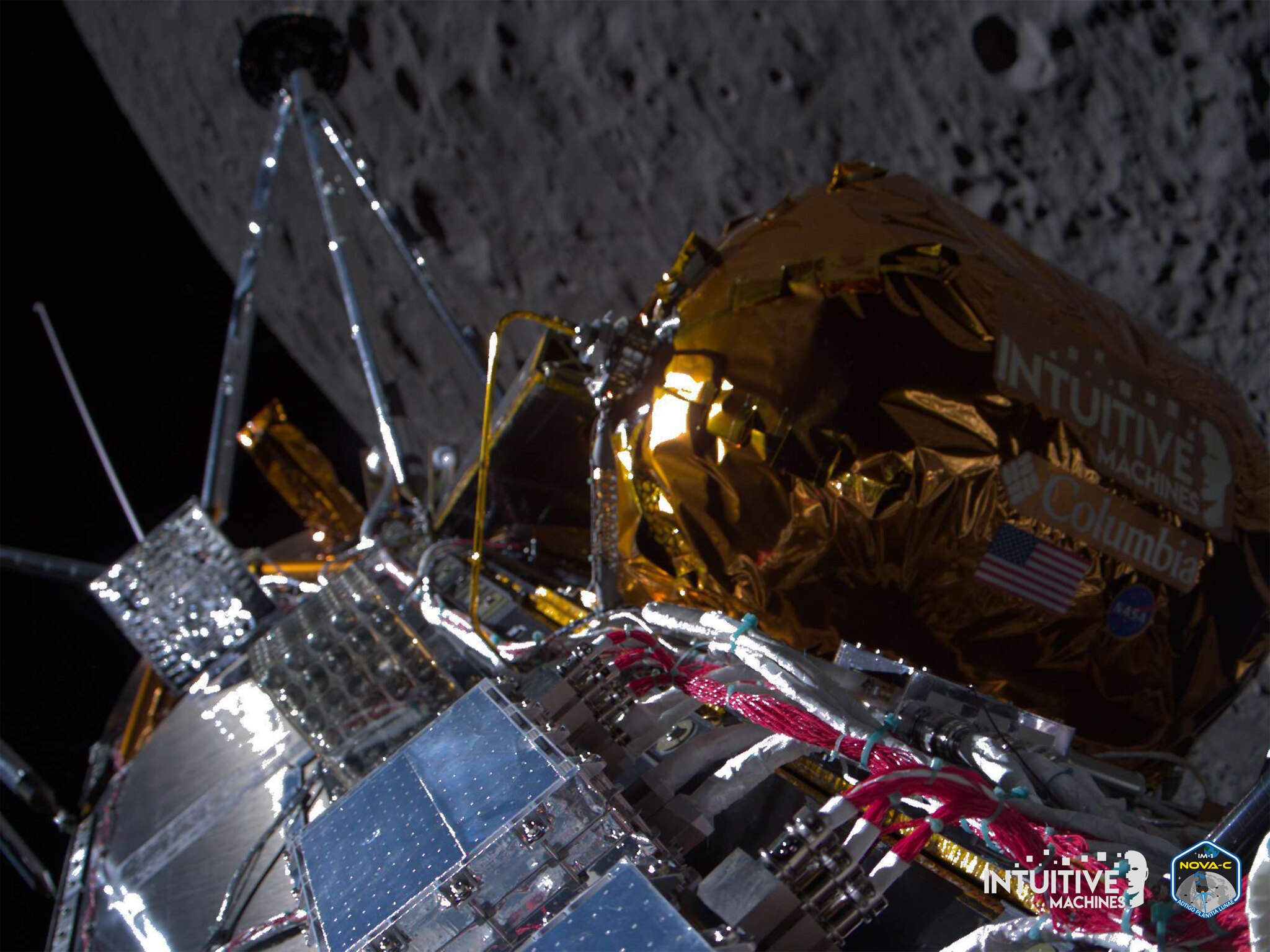Perseverance Rover Logs 1,000 Days on Mars
 NASA’s Perseverance rover took this image of some of its instruments using the Left Navigation Camera on July 15, 2021.
Credit: NASA/JPL-Caltech
NASA’s Perseverance rover took this image of some of its instruments using the Left Navigation Camera on July 15, 2021.
Credit: NASA/JPL-Caltech  NASA’s Perseverance rover and its miniature helicopter Ingenuity have explored the Martian surface for 1,000 days, traversing an ancient crater and collecting 23 geologic samples. A Martian day (or sol) is slightly longer than an Earth day, at 24 hours and 39 minutes, meaning Perseverance has been on Mars for 1,028 Earth days. Perseverance easily surpassed its planned primary mission span of at least one Martian year.
NASA’s Perseverance rover and its miniature helicopter Ingenuity have explored the Martian surface for 1,000 days, traversing an ancient crater and collecting 23 geologic samples. A Martian day (or sol) is slightly longer than an Earth day, at 24 hours and 39 minutes, meaning Perseverance has been on Mars for 1,028 Earth days. Perseverance easily surpassed its planned primary mission span of at least one Martian year.
Since landing in the Jezero crater on Feb. 18, 2021, Perseverance drove 14 miles across the arid landscape toward the crater’s rim. Scientists selected the crater as a landing location from more than 60 candidates because they believe the area was once a river delta and might contain valuable minerals. Perseverance is approximately 2,000 miles from NASA’s Curiosity rover, which landed on Mars in 2012.
The Perseverance rover arrived on Mars with four science objectives: study the planet’s landscape and history, determine the habitability of the ancient Martian environment, collect geologic samples for a potential future return to Earth, and test technologies for future human presence on Mars. These technologies include oxygen production for future human explorers, a weather station to test atmospheric dust, and even small pieces of spacesuit material to test their durability in the Martian environment.
Perseverance is paired with the Ingenuity drone helicopter, which rode to Mars attached to the rover. Ingenuity completed its first takeoff in April 2021, becoming the first aircraft to achieve flight on another planet, and has since completed 67 flights.
Next, the rover will explore the crater’s rim, where orbital imagery identified carbonate deposits. According to NASA, the carbonate deposits may indicate how Mars transitioned from having liquid water and a thicker atmosphere to being the freezing desert it is today.
Perseverance is part of NASA’s Moon to Mars architecture, which includes the Artemis lunar missions that will help prepare humans to land on Mars.




